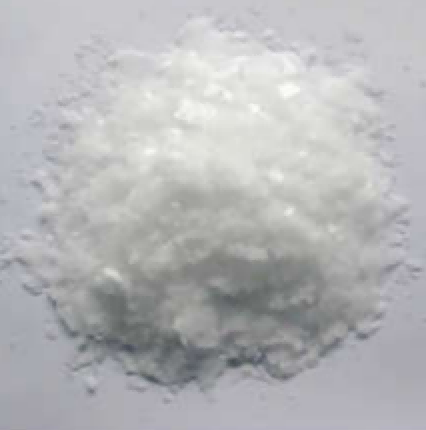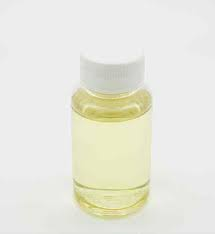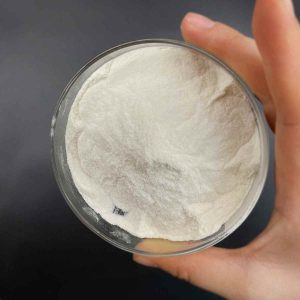1. Introduction
Just 24 hours ago, the U.S. Environmental Protection Agency (EPA) fast-tracked approval for a new class of low-impact herbicide adjuvants that rely heavily on sodium lauryl sulfate (SLS) as a primary wetting agent. This move signals a major shift in precision agriculture, where efficacy and environmental safety must coexist. While most consumers know SLS from shampoos or toothpaste, its role as a surfactant in agricultural science is far more specialized—and increasingly vital.

In this article, we’ll dive into how sodium lauryl sulfate—also known as sodium dodecyl sulfate, lauryl sulfate, or natrium lauryl sulfate—is quietly revolutionizing weed control. Forget bathroom shelves; the real innovation is happening in fields, where SLS helps herbicides stick, spread, and penetrate like never before.
2. Why Surfactants Matter in Agriculture
A surfactant, short for ‘surface-active agent,’ reduces surface tension between liquids or between a liquid and a solid. In farming, this means helping water-based herbicides coat waxy or hairy weed leaves instead of beading up and rolling off. Without a surfactant, even the strongest weed killer might fail.
The meaning of surfactant in this context is practical: it’s the invisible helper that ensures every drop counts. Among the many options—non ionic surfactant types like polysorbate 80 or ethoxylated alcohol, cationic surfactants like cetyl trimethyl ammonium bromide (CTAB), and amphoteric ones like cocamidopropyl betaine—sodium lauryl sulfate stands out for its strong anionic properties and cost-effectiveness.
3. Sodium Lauryl Sulfate in Herbicide Formulations
Sodium lauryl sulfate (often labeled as sls sodium lauryl sulfate or na lauryl sulfate) is an anionic surfactant widely used as a surfactant for herbicides and a surfactant for weed killer. Its molecular structure—featuring a hydrophobic tail and hydrophilic head—allows it to anchor into plant cuticles while keeping the herbicide solution evenly dispersed.

Unlike sodium laureth sulfate (also called sodium lauryl ether sulfate or sodium lauryl ether sulphate), which is milder and common in personal care, SLS delivers aggressive wetting power ideal for tough agricultural conditions. It’s frequently blended with methylated seed oil or alkyl polyglucoside to balance performance and crop safety.
4. Advanced Blends: Beyond Basic SLS
Modern agricultural surfactants rarely rely on SLS alone. Formulators now combine it with bio surfactants like decyl glucoside or coco glucoside for biodegradability, or with amphoteric surfactants such as coco betaine (also known as amidopropyl betaine or coco amido propyl betaine) to stabilize pH and reduce phytotoxicity.
- Sodium cocoyl isethionate and sodium lauroyl sarcosinate offer gentler alternatives but lack the wetting strength needed for dense weed mats.
- Nonionic surfactants like Span80 or Pluronic 127 (poloxamer 188) are added to improve rainfastness.
- Lignin sulfonate, a byproduct of paper manufacturing, is sometimes included as a natural dispersant.
These hybrid systems create what’s known as a ‘lawn wetting agent’ or ‘wetting agent for grass’ that ensures even coverage without harming desirable plants.

5. Clarifying the SLS Confusion
Many get confused between sls sodium, sls sulfate, and sls sodium laureth sulfate—but they’re not interchangeable. Sodium lauryl sulfate (C12H25SO4Na) is distinct from sodium laureth sulfate (which contains ethoxylated chains, hence ‘laureth’ or ‘sulfate laureth’). The former is sodium dodecyl sulfate; the latter is sodium lauryl ether sulphate.
Similarly, ammonium lauryl sulfate (or ammonium dodecyl sulfate) is a close cousin but carries an ammonium ion instead of sodium. And while fluoro surfactants or sodium deoxycholate offer ultra-low surface tension, they’re cost-prohibitive for large-scale farming.
For those sourcing sodium lauryl sulfate for sale, it’s critical to verify purity—especially if blending with sensitive ingredients like copper 1 bromide or ethoxylated alcohols.
6. Sustainability and the Future
With rising demand for eco-friendly agrochemicals, companies like Rohit Surfactants Private Limited are developing SLS-based blends that incorporate bio surfactants such as sodium coco sulfate (sometimes mislabeled as coco sodium sulfate) and sodium cocoyl glutamate. These reduce aquatic toxicity while maintaining performance.
Research also shows promise in pairing SLS with nonionic surfactant types like alkyl polyglucoside to cut overall chemical load. The goal? High-efficacy weed control that doesn’t compromise soil or water health.
7. Conclusion
Sodium lauryl sulfate may be best known for its foaming action in shampoos, but its real impact lies in the fields—where it enables smarter, more efficient weed management. As agriculture embraces precision tools and sustainable chemistry, SLS remains a cornerstone surfactant, often working in concert with methylated seed oil, cocamidopropyl, and other advanced ingredients. Whether labeled as sodium dodecyl sulfate, lauryl sulfate, or simply SLS, its role in modern farming is anything but basic.
Our Website founded on October 17, 2012, is a high-tech enterprise committed to the research and development, production, processing, sales and technical services of ceramic relative materials such as Sodium. Our products includes but not limited to Boron Carbide Ceramic Products, Boron Nitride Ceramic Products, Silicon Carbide Ceramic Products, Silicon Nitride Ceramic Products, Zirconium Dioxide Ceramic Products, etc. If you are interested, please feel free to contact us.


